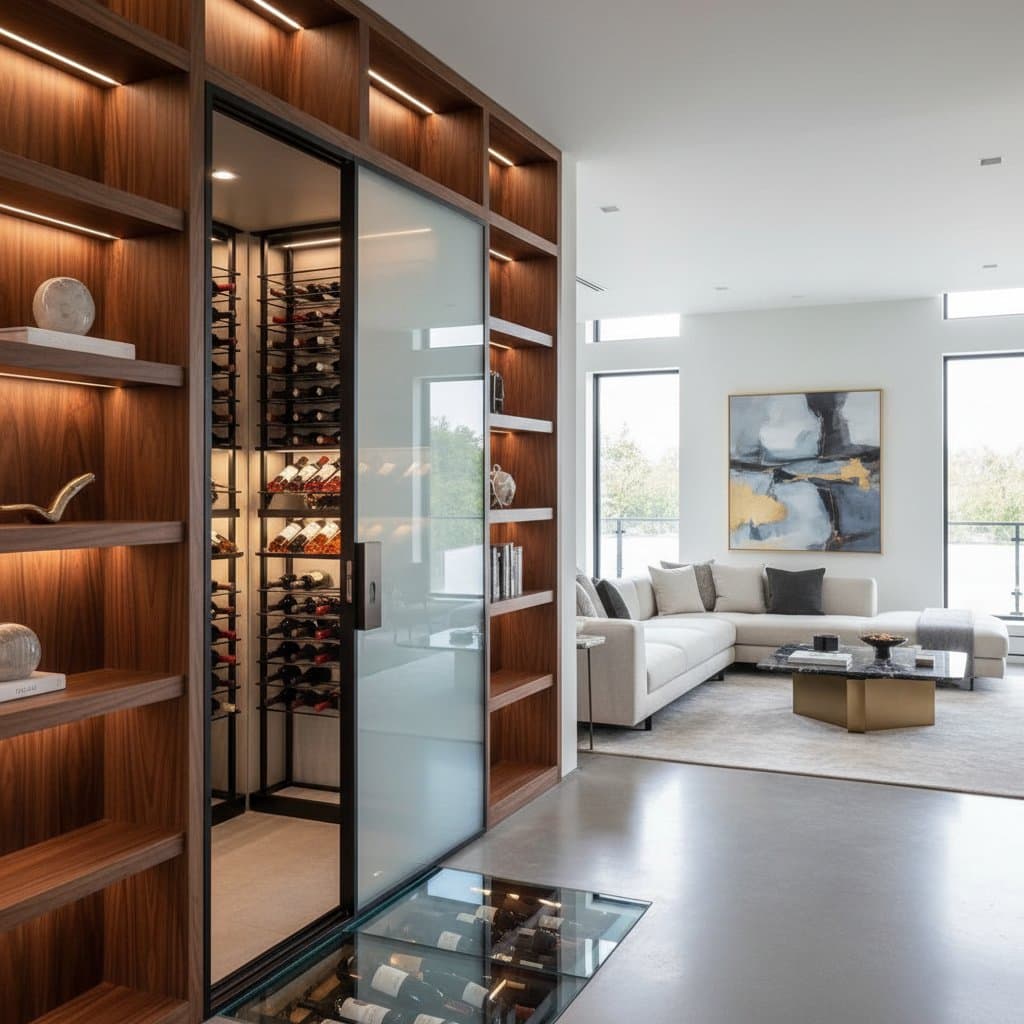- Project scale: Substantial structural modifications, including curved facades or load-bearing arches, incorporate engineering assessments and permitting fees.
For introductory changes, such as selecting rounded-edge furniture or installing a basic arched doorway, anticipate expenditures at the lower spectrum. Extensive overhauls or integrations in new builds correspondingly elevate the financial commitment.
Options and Types
Curved motifs manifest in structural components, surface treatments, or furnishings, accommodating diverse budgetary constraints and aesthetic objectives.
Arched Doorways and Openings
These rounded apexes temper the passage between adjacent spaces, ideal for corridors or linkages between living and dining zones. They introduce fluidity without disrupting overall room proportions.
Curved Walls
Such installations impart dynamic flow and a sculptural dimension, particularly effective in foyers or along staircases. Construction typically involves framed drywall assemblies or applied custom plaster finishes for seamless contours.
Rounded Furniture
Selections encompass sofas with upholstered bends, armchairs featuring softened profiles, and tables with circular or oval tops. This category offers an accessible entry point to curvaceous themes, bypassing the need for building modifications.
Curved Staircases
These configurations generate a sense of graceful ascent, often requiring bespoke fabrication. They shine in grand entry halls or expansive open-plan arrangements where vertical movement becomes a focal point.
Curved Ceilings or Niches
Incorporating vaults or recessed alcoves enhances spatial depth through interplay of light and shadow. This technique appears frequently in high-end residences or designated accent rooms like libraries.
Arched Windows
These frames admit natural illumination via elegant, non-angular silhouettes, aligning well with Mediterranean influences or quaint cottage architectures.
Step-By-Step Basics
For a Simple Arched Opening
- Plan the curve. Develop a precise sketch or employ a pliable template to outline the intended arch radius and height.
- Prepare the wall. Dismantle existing trim, cut away drywall sections, and expose underlying framing where necessary.
- Install a curved header. Position flexible plywood strips or specialized tracks to define the arch's structural curve.
- Add framing. Affix supportive studs or ribs to maintain the form's integrity during subsequent layers.
- Attach drywall. Opt for flexible drywall panels or lightly moisten standard sheets to facilitate bending along the curve.
- Tape and mud. Apply joint compound meticulously over seams to achieve a uniform, flowing surface.
- Sand and prime. Refine the texture through progressive sanding, followed by a base coat of primer for adhesion.
- Finish edges. Install complementary trim or molding to delineate the arch crisply.
- Paint or seal. Apply finishes that harmonize with surrounding elements for cohesive integration.
These procedures suit non-structural, interior partitions. For load-bearing applications or complex configurations, engage certified contractors to ensure safety and compliance.
Alternatives
Straight-Edge Minimalism
This paradigm prioritizes unadorned lines, reducing construction costs and simplifying furniture placement. It delivers a crisp, contemporary aesthetic, though it forgoes the inherent gentleness of rounded forms.
Geometric Panels
Interest emerges from angular facets rather than smooth arcs, suiting sleek modern or rugged industrial interiors with patterned wall treatments.
Textured Walls
Dimensional effects arise from applications of stippled plaster, layered wood veneers, or draped fabrics, imparting richness absent structural reconfiguration.
Organic Materials
Elements like smoothed river stones, interlaced rattan weaves, or slatted timber assemblies simulate curvaceous impressions through natural irregularity, eliminating invasive alterations.
ROI and Resale
Incorporating curved details elevates a property's allure by emphasizing thoughtful craftsmanship, independent of expanded floor area. Prospective buyers respond positively to such intentional nuances.
- Minor updates: Introducing rounded furnishings or modest arches may enhance appraised value by 2 to 5 percent through improved aesthetic cohesion.
- Major remodels: Elaborate features like custom staircases or sweeping walls forge lasting visual impact, though recouping full investment varies by market dynamics.
- Optimal returns: Enhancements in entryways, principal living zones, and kitchens elicit the strongest appreciation from viewers seeking distinctive character.
Maintain equilibrium in application; excessive curves risk rendering a space idiosyncratic, potentially constraining future adaptability or furnishing versatility.
Why Curves Work So Well
Curves align intuitively with human patterns of navigation and perception. They direct pathways with natural grace and moderate abrupt shifts in sightlines. From a design perspective, arcs alleviate optical strain, fostering tranquility in occupied areas. Rounded profiles diffuse severe shadows and minimize reflective harshness from light sources. Furnishings with softened contours promote ergonomic comfort and mitigate injury risks in households with children or pets.
Professionals leverage curvatures to harmonize proportions. Within compact enclosures, a single curved partition expands the illusion of volume. In expansive settings, strategic arcs concentrate attention and infuse intimacy. The chosen radius dictates subtlety versus boldness; even modest bends alter illumination distribution across surfaces, enhancing ambient quality.
How to Blend Curves with Existing Style
- Modern homes: Integrate subtle arches alongside muted palettes and streamlined hardware for understated elegance.
- Traditional homes: Employ restrained curves in crown moldings or cabinet facades to echo heritage motifs softly.
- Industrial spaces: Offset arcs with raw metals or unveiled structural beams, creating textured juxtaposition.
- Coastal or boho styles: Layer curves with organic weaves, seashell accents, and airy linens for relaxed vibrancy.
Equilibrium remains paramount. Designate one or two curved highlights per room to avoid overwhelming the composition.
Pro Tips for Success
- Start small. Experiment with curvaceous accessories or rugs prior to pursuing built-in modifications.
- Match scale. Align curve dimensions with overhead clearance and spatial footprint to preserve harmony.
- Use light. Strategically place fixtures to accentuate curvatures and generate captivating shadow patterns.
- Plan furniture. Conduct measurements in advance to accommodate built curves without impeding layout functionality.
- Consult designers. Leverage expert visualization tools to simulate outcomes digitally before committing resources.
Implementing Curves Thoughtfully
Curves transcend ephemeral fashion, influencing spatial sensation and utility profoundly. Commence with a rounded ottoman or progress to an arched partition; the transformation registers swiftly. Fluid contours soothe vision and encourage fluid circulation. This motif accommodates virtually every residence when applied with discernment.
Determine the desired scope upfront. Incremental adjustments invigorate without substantial outlay. Ambitious endeavors demand meticulous scheduling, regulatory approvals, and collaboration with qualified specialists. Verify adherence to regional building standards and solicit estimates from vetted professionals to guide decisions.











